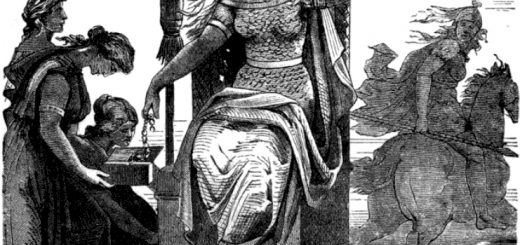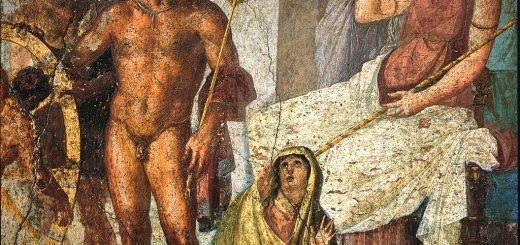Mithra (Mithras)
The Sun God worshipped throughout the Roman Empire since it was first encountered by them in Persia during the reign of Emperor Nero. Mithra was born from a rock within a cave, and his birth was witnessed by a group of shepherds. He has also been depicted as being born from a tree, and at Housesteads on Hadrians Wall, there was a tradition that he came forth from a Cosmic Egg. As he grew, Mithra became strong and courageous, eagerly using these traits to fight evil.
![Serge Ottaviani [CC BY-SA 3.0 (https://creativecommons.org/licenses/by-sa/3.0)], from Wikimedia Commons](http://www.mysteriousbritain.co.uk/wp/wp-content/uploads/2018/12/800px-Mithra_sacrifiant_le_Taureau-005-261x300.jpg) One of the key stories attached to Mithra, is that he slew a divine bull so that its body parts could assist mankind. The bull’s blood produced the vine, its spinal cord brought forth wheat and the bull’s sperm created each type of useful animal known to man. The bull slaying scene was depicted in the temples, and was referred to as the tauroctony. After a while mithra ascended to the heavens, where he continued to look down and care for mankind, especially those who were his followers. Indeed his followers were also extended special protection after their deaths so that their souls were not lost to darker forces. It was believed that should mankind find it hard sustain itself, then Mithra would return during those end of days, and slay another divine bull, thus creating another bountiful harvest.
One of the key stories attached to Mithra, is that he slew a divine bull so that its body parts could assist mankind. The bull’s blood produced the vine, its spinal cord brought forth wheat and the bull’s sperm created each type of useful animal known to man. The bull slaying scene was depicted in the temples, and was referred to as the tauroctony. After a while mithra ascended to the heavens, where he continued to look down and care for mankind, especially those who were his followers. Indeed his followers were also extended special protection after their deaths so that their souls were not lost to darker forces. It was believed that should mankind find it hard sustain itself, then Mithra would return during those end of days, and slay another divine bull, thus creating another bountiful harvest.
The religious belief in Mithra attracted people from all walks of life, bridging the class divide. Many of his followers were notable persons in society, soldiers and even slaves. The cult was a fraternity where the members were each others Brethren. They would meet in temples called Mithraeums, which were constructed underground so as to represent the birth place of Mithra, a cave. Other groups did however meet in caves and grottoes. Temples to Mithras have been found at Rudchester, Housesteads and Carrawburgh.
Their ceremonies were magical rites, and the members had to progress through seven degrees of initiation. These were represented by different robes and animal masks. The seven degrees were Raven (Corax), Occult (I have also seen this refereed to as Bridegroom or Nymphus), Soldier (Miles), Lion (Leo), Persian (Perses), Runner of the Sun (Heliodromus) and Father (Pater). Their ceremonies were secret and involved fasting and ritual purification. Trials of strength, courage, endurance and faith were common, and a ceremony involving consecrated bread and wine, called the sacrament was undertaken before an initiate could be accepted into the next degree.
Each day of the week was attributed to a planet, and the day associated with the Sun was held to be very holy. Seasonal holy days included the equinoxes and 25 December.
A priestly order oversaw the cult and handed down the traditions. They were instrumental in the ceremonies, tending the altar fires, and offering prayers to Mithra at dawn, noon and dusk.
Throughout the many centuries Mithra was followed, his cult changed from involving savage barbaric rites, were the sacrifice of bulls was supposedly essential, to a more benevolent form of worship taking the emphasis away from Mithras’ warrior status.
There is little wonder that the worship of Mithra was regarded as a threat to Christianity, especially since it was so widespread. It is not surprising then that Christianity adopted many aspects of the Mithra religion; such as treating Sunday as holy; making 25 December a special day; having a deity born on Earth who looked after man even after ascending to the heavens, where he continued to look down over all, especially his followers, promising them protection in the afterlife. There are many aspects of the Mithra religion that Christianity adopted, but they drew a line at sacrificing bulls in their rites.




Recent Comments